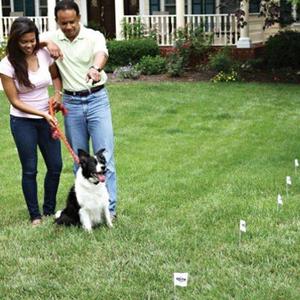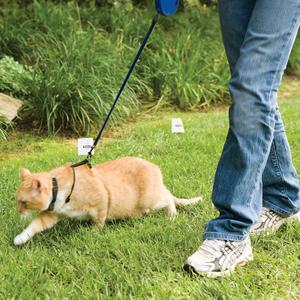Rehoming pets from a shelter can be a tricky business - on the one hand, you want to clear space and prevent shelter overcrowding for humane as well as medical reasons, but you don't want to adopt a pet to home that's unsafe or presents a threat. It's a fine line between sending a pet into a dangerous circumstance and ensuring their safety at times.
One conundrum that's frequently encountered when trying to place a pet is having to make a call on whether or not an electronic or in-ground fence makes for a safe pet containment system. Some otherwise great pet owners cannot have a traditional fence due to landscape, zoning or other issues - and when shelters deny adopters without traditional fences, this represents an opportunity lost when it comes to providing a loving home for a needy dog.
In the interest of getting as many pets as possible into safe, loving homes, read on to find out 5 common myths about electric fences and how these can be used to safely keep rehomed pets contained. Share this with your local animal shelter or rescue group to help educate your local animal control resources.
 Myth #1: Shocks are painful.
Myth #1: Shocks are painful.
The terminology that's used to describe the stimulus that a dog receives when going outside the perimeter of an in-ground fence is more aptly described as a static correction, and not a shock. This isn't merely a euphemism - I have a static correction collar and I've tried it on myself. It's a static shock, just like you would receive after rubbing a balloon on your hair and touching the refrigerator. It's not painful, but it is unpleasant, and dogs seek to avoid it.
It drives home the lesson of where is not OK to go and where is OK to go without pain - it gets their attention. It's not cruel, inhumane or painful.
Myth #2: The level of static correction is always the same.
The first few times a dog encounters the perimeter, a warning tone sounds from the collar, followed by a static correction if they don't walk back inside the set perimeter. In order to establish the perimeter in the dog's mind, you have to get their attention, so higher levels of static correction are sometimes needed. Always start at a mid-range or low setting (just enough to get them to take notice) and move up as needed to choose the right level for each pet.
In dogs with a strong prey drive or a strong desire to roam, the level of correction has to match up with the level of desire to challenge the fence. As time progresses and the dog learns the area that is OK to go in, the level of static correction can be decreased to a level that will remind them and get their attention, but not higher. And the dog should already have learned that a warning tone will sound before the correction is delivered, so in many cases dogs no longer need the static correction reminder once training is complete. Training a new dog with a new system can take a few weeks, so make sure you're committed to this training period and getting your dog acclimated to the new fence.
 Myth #3: Electric and electronic fences are the same.
Myth #3: Electric and electronic fences are the same.
An electric fence will shock anyone who comes into contact with it. They are usually found where livestock and horses need to be contained, but often are too widely spaced to contain a dog.
An electronic fence is a zone of security that your dog learns and respects in a very short time. The transmitter sends out a signal that's detected by the collar, which then emits a training tone that gets your dog's attention. If they proceed out of the safety zone, the collar gives a static correction - not enough to hurt, but enough to get their attention and teach respect for the boundary. Over a few days or weeks, he learns that stopping when the tone is emitted means no correction and he stays inside the perimeter.
Myth #4: Electronic collars will randomly "go off" even if your dog is inside the perimeter.
Modern training collars are set up so the system will only deliver a static correction when it detects the dog is leaving the boundary area. They are specially designed so that unwanted or stray discharges are eliminated.
 Myth #5: An electronic fence collar can cause seizures, even in dogs who aren't epileptic.
Myth #5: An electronic fence collar can cause seizures, even in dogs who aren't epileptic.
This can be used as a scare tactic and is untrue. The stimulus only travels to the skin of the dog and is not strong enough to reach the brain, so there is no possibility of setting off a seizure. The stimulus only travels through the skin between the contacts on the collar, which are only 1" apart.
Don't let myths about in-ground fences and training collars keep shelter pets out of loving homes with a potential adopter. As long as adopters are committed to the learning process and can abide by the acclimation and training period, a prospective owner with an in-ground fence is every bit as worthy an owner as someone with a traditional fence.
Have you been rejected from adopting a dog because of your home, fence, or other factor? Share your story in the comments below.








